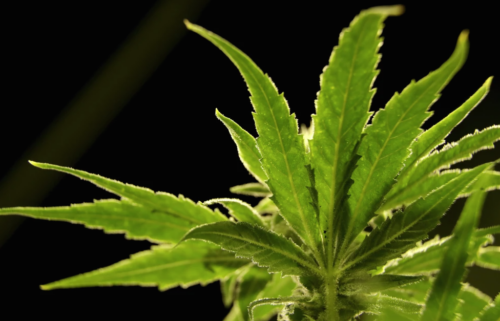Cannabis use disorder is common in one state where marijuana is legal

Originally Published: 29 AUG 23 11:00 ET Updated: 04 SEP 23 10:16 ET By Sandee LaMotte, CNN
(CNN) — Developing cannabis use disorder is relatively common in Washington state, one of the first states to fully legalize cannabis, and can even occur in people who only use medical marijuana, according to a new study.
“There’s a perception that people who are using marijuana for medical reasons have a lower risk of a cannabis use disorder,” said lead author Gwen Lapham, assistant professor at Kaiser Permanente Bernard J. Tyson School of Medicine.
To have cannabis use disorder, or CUD, a person must have two or more of such symptoms as craving weed, becoming tolerant, using more than intended, using marijuana even though it causes problems in life, using it in high-risk situations, experiencing withdrawal and being unable to quit, according to the US Centers for Disease Control and Prevention.
“The main take home message of our study is that cannabis use disorder is common among primary care patients in a state with legal cannabis use,” said Lapham, who is also an assistant investigator at the Kaiser Permanente Washington Health Research Institute.
In addition, using both medical and recreational weed led to a more severe addiction than using medical marijuana alone, the study revealed.
“This study reports some unique, badly needed data on cannabis use in the post-legalization period, specifically, what is the extent and nature of problematic, concerning cannabis use in the general population,” said Nicholas Vozoris, assistant professor and clinician investigator in the division of respirology at the department of medicine at the University of Toronto. He was not involved in the study.
“Not all people will want or remember to report their cannabis use … therefore, this study likely underestimates the prevalence of cannabis use disorder,” he added.
Cannabis use disorder where access is legal
The study, published Tuesday in JAMA Network Open, quizzed nearly 110,000 patients of a Kaiser Permanente integrated health system in Washington State about their attitudes towards marijuana, then asked 5,000 of those more confidential questions about their use of weed in the past year. Only those who reported cannabis use in the past 30 days, or 1,500 people, were included in the study.
One of the key findings was how frequently people used marijuana, said Dr. Alexandre Dumais, associate clinical professor of psychiatry at the University of Montreal, who was not involved in the research.
“The authors show that 38.8% of medical cannabis users, 25.2% of non-medical cannabis users and 56.1% of mixed medical/non-medical cannabis users consume the substance daily or almost daily,” Dumais said in an email.“Moreover, 39.7% of mixed users consume more than 3 times per day.”
Because frequent use is an important risk factor for the development of cannabis use disorder, “it is not surprising” to find an elevated prevalence of such symptoms, Dumais said.
“Notably, those who reported any non-medical use were at greatest risk of moderate to severe CUD … this is an interesting aspect of the study as not many authors have evaluated the prevalence according to CUD severity,” he said.
There are no current FDA-approved medications to treat cannabis use disorder, Lapham said, so behavior-based treatments or specialty addiction centers are the rule. Yet not getting treatment can have consequences.
“Among others, studies have noted a higher risk of developing a mental disorder, cognitive deficits, use of psychiatric services and hospitalization, in addition to violent behavior towards oneself and others,” Dumais added.
It’s not just Washington state, either. The new study’s result mirror findings from other countries such as the Netherlands, Germany, Australia, New Zealand, Ireland and France. A 2020 meta-analysis of those countries and the US found 22% of cannabis users would develop a cannabis disorder during their lifetime — the risk rose to 33% for younger people who engaged in weekly or daily use of weed. A 2021 study found cannabis use disorder rose from 17.7% before marijuana was legalized in Canada to 24.3% after legalization.
“As cannabis becomes increasingly legal and available, it’s important that we acknowledge the potential harms so that people can make informed decisions about use,” said Dr. Beth Cohen, professor of medicine at the University of California, San Francisco and co-director of UCSF’s program in residency investigation methods and epidemiology. She was not involved in the study.
“Though many people can use cannabis without becoming addicted, the rates of CUD seen in this and other studies highlight a need for better understanding of who is at greatest risk of CUD as well as better education for the public and healthcare providers on how to identify and treat it.”
The-CNN-Wire
™ & © 2023 Cable News Network, Inc., a Warner Bros. Discovery Company. All rights reserved.



